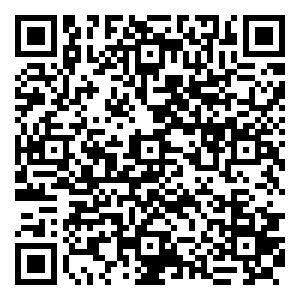谢伟1,
张鑫1,
余俊伟1,
司鹏飞2,3
1.西安建筑科技大学环境与市政工程学院,西安 710055
2.中国建筑西南设计研究院,成都 610042
3.清华大学建筑学院,北京 100084
基金项目: 国家重点研发计划(2016YFC0700503)
Pollution characteristics of indoor particle matter at infiltration ventilation building
FAN Yuesheng1,,XIE Wei1,
ZHANG Xin1,
YU Junwei1,
SI Pengfei2,3
1.School of Environmental and Municipal Engineering, Xi'an University of Architecture and Technology, Xi'an 710055, China
2.China Southwest Architecture Design Institute, Chengdu 610042, China
3.College of Architecture, Tsinghua University , Beijing 100084, China
-->
摘要
HTML全文
图
参考文献
相关文章
施引文献
资源附件
访问统计
摘要:通过建立颗粒物穿透率与渗透通风房间换气次数的数学模型以及室内颗粒物浓度集总参数模型,对常州市某住宅建筑室内颗粒物污染特征进行分析,通过实验验证了颗粒物穿透率、室内颗粒物浓度模型的准确性。计算结果表明,对于室内无污染源的渗透通风房间,粒径为0.5、1.0、2.5 μm的颗粒物以及PM2.5穿透率随换气次数的增大而增加;当换气次数从0.2 次·h-1增加至0.5次·h-1时,PM2.5穿透率由70%增大至88%,增加25.7%。对于用香烟烟雾作为颗粒污染物尘源的房间,空气净化器的实际洁净空气量CADR值为152 m3·h-1,相比试验舱标定工况320 m3·h-1衰减52.5%。
关键词: 渗透通风/
颗粒物/
换气次数/
穿透率
Abstract:Pollution characteristics in infiltration ventilation room was analyzed in Changzhou through establishing both the mathematical model of particle penetration rate with air exchange rate and the mass balance equation of particulate matter. The accuracy of those models were also tested and verified by experiments. The results indicate that the penetration rate of particle with diameter of 0.5, 1.0, 2.5 μm and PM2.5 were increased with air exchange rate, and the penetration rate of PM2.5 increased from 70% to 88%, increasing by 25.7% when the air exchange rate increased from 0.2 times per hour to 0.5 times per hour. The clean air delivery rate value of air cleaner was 152 m3·h-1, which attenuated 52.5% compared to the value of 320 m3·h-1 in test chamber conditions using cigarette smoke as the pollutant source.
Key words:infiltration ventilation/
particle/
air exchange rate/
penetration rate.

| [1] | Mage D T, Wilson W, Hasselblad V, et al.Assessment of human exposure to ambient particulate matter[J].Air & Waste Management Association, 1999, 49(11): 1280-1291 10.1080/10473289.1999.10463964 |
| [2] | Thatcher T L, Layton D W.Deposition, resuspension and penetration of particles within a residence[J].Atmospheric Environment, 1995, 29(13): 1487-1497 10.1016/1352-2310(95)00016-R |
| [3] | Wallace L.Correlation of personal exposure to particles with outdoor air measurements: A review of recent studies[J].Aerosol Science & Technology, 2000, 32(1): 15-25 10.1080/027868200303894 |
| [4] | Morawska L, HE C R, Hitchins J, et al.The relationship between indoor and outdoor airborne particles in the residential environment[J].Atmospheric Environment, 2001, 35(20): 3463-3473 10.1016/S1352-2310(01)00097-8 |
| [5] | Cakmak S, Dales R, Kauri L M, et al.Metal composition of fine particulate air pollution and acute changes in cardio respiratory physiology[J].Environmental Pollution, 2014, 189(12): 208-214 10.1016/j.envpol.2014.03.004 |
| [6] | 程鸿,胡敏,张利文,等. 北京秋季室内外PM2.5污染水平及其相关性[J]. 环境与健康杂志, 2009, 26(9): 787-789 |
| [7] | Koutrakis P, Briggs S, LEADERER B.Source apportionment of indoor aerosols in Suffolk and Onondaga counties, New York[J].Environment Science & Technology, 1992, 26(3): 521-527 10.1021/es00027a012 |
| [8] | OZKAYNAK H, XUE J, SPENGLER J, et al.Personal exposure to airborne particles and metals: Results from the particle team study in riverside, California[J].Exposure Analysis and Environmental Epidemiology, 1996, 6(1): 57-78 |
| [9] | LEWIS S.Solid particle penetration into enclosures[J].Journal of Hazardous Materials, 1995, 43(3): 195-216 10.1016/0304-3894(95)00037-U |
| [10] | LIU D L, NAZAROFF W W.Particle penetration through building cracks[J].Aerosol Science and Technology, 2003, 37(7): 565-573 10.1080/02786820300927 |
| [11] | 陈淳. 室外可吸入颗粒物对室内环境的影响及其控制[D]. 北京: 清华大学,2012 |
| [12] | LIU D L, NAZAROFF W W.Modeling pollutant penetration across building envelopes[J].Atmospheric Environment, 2001, 35(26): 4451-4462 10.1016/S1352-2310(01)00218-7 |
| [13] | Fuchs N A.The Mechanics of Aerosols[M].New York:Pergamon Press, 1964 |
| [14] | LEE K W.Simplified caculation of aerosol penetration through channels and tubes[J].Atmospheric Environment, 1980, 14: 1089-1094 10.1016/0004-6981(80)90039-6 |
| [15] | Li Y g, Chen Z d.A balance-point method for assessing the effect of natural ventilation on indoor particle concentrations[J].Atmospheric Environment. 2003, 37(30): 4277-4285 10.1016/S1352-2310(03)00527-2 |
| [16] | 谢伟. 室内颗粒物浓度变化特征及污染控制策略研究[D]. 西安:西安建筑科技大学, 2013 |
| [17] | American Society of Heating, Refrigerating and Air-Conditioning engineers, Inc.Ashrae handbook [M].Atlanta,GA, 2015 |
| [18] | 中华人民共和国国家质量监督检验检疫总局. 空气净化器: GB/ T 18801-2015[S]. 北京:中国标准出版社, 2015 |
| [19] | 许钟麟. 空气洁净技术原理[M]. 北京:中国建筑工业出版社, 2016 |

Turn off MathJax -->
 点击查看大图
点击查看大图计量
文章访问数:1491
HTML全文浏览数:1048
PDF下载数:525
施引文献:0
出版历程
刊出日期:2018-04-22
-->
渗透通风建筑室内颗粒物的污染特征
樊越胜1,,谢伟1,
张鑫1,
余俊伟1,
司鹏飞2,3
1.西安建筑科技大学环境与市政工程学院,西安 710055
2.中国建筑西南设计研究院,成都 610042
3.清华大学建筑学院,北京 100084
基金项目: 国家重点研发计划(2016YFC0700503)
关键词: 渗透通风/
颗粒物/
换气次数/
穿透率
摘要:通过建立颗粒物穿透率与渗透通风房间换气次数的数学模型以及室内颗粒物浓度集总参数模型,对常州市某住宅建筑室内颗粒物污染特征进行分析,通过实验验证了颗粒物穿透率、室内颗粒物浓度模型的准确性。计算结果表明,对于室内无污染源的渗透通风房间,粒径为0.5、1.0、2.5 μm的颗粒物以及PM2.5穿透率随换气次数的增大而增加;当换气次数从0.2 次·h-1增加至0.5次·h-1时,PM2.5穿透率由70%增大至88%,增加25.7%。对于用香烟烟雾作为颗粒污染物尘源的房间,空气净化器的实际洁净空气量CADR值为152 m3·h-1,相比试验舱标定工况320 m3·h-1衰减52.5%。
English Abstract
Pollution characteristics of indoor particle matter at infiltration ventilation building
FAN Yuesheng1,,XIE Wei1,
ZHANG Xin1,
YU Junwei1,
SI Pengfei2,3
1.School of Environmental and Municipal Engineering, Xi'an University of Architecture and Technology, Xi'an 710055, China
2.China Southwest Architecture Design Institute, Chengdu 610042, China
3.College of Architecture, Tsinghua University , Beijing 100084, China
Keywords: infiltration ventilation/
particle/
air exchange rate/
penetration rate
Abstract:Pollution characteristics in infiltration ventilation room was analyzed in Changzhou through establishing both the mathematical model of particle penetration rate with air exchange rate and the mass balance equation of particulate matter. The accuracy of those models were also tested and verified by experiments. The results indicate that the penetration rate of particle with diameter of 0.5, 1.0, 2.5 μm and PM2.5 were increased with air exchange rate, and the penetration rate of PM2.5 increased from 70% to 88%, increasing by 25.7% when the air exchange rate increased from 0.2 times per hour to 0.5 times per hour. The clean air delivery rate value of air cleaner was 152 m3·h-1, which attenuated 52.5% compared to the value of 320 m3·h-1 in test chamber conditions using cigarette smoke as the pollutant source.
